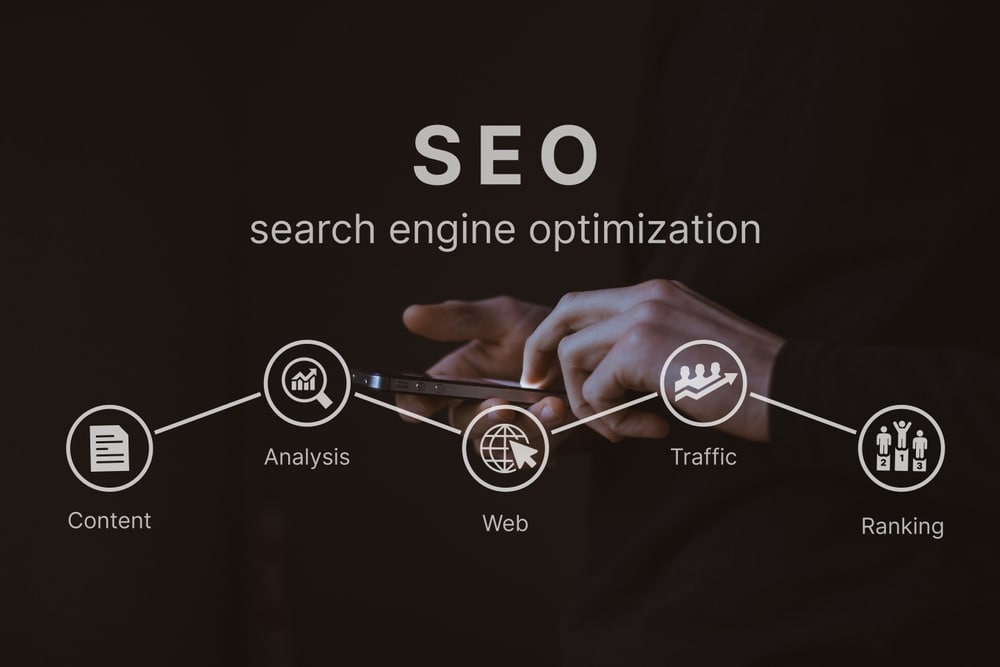
Law firm branding shapes client perceptions and fuels loyalty by conveying a law firm’s unique identity, fostering trust, and prompting repeat engagements. In the crowded legal market, a strategic brand elevates credibility and reduces client acquisition costs while boosting referrals. This guide covers the fundamentals of law firm branding, from defining core identity elements and crafting visual assets to developing persuasive messaging, enhancing client experience, leveraging digital channels, and measuring loyalty-driven outcomes—all with actionable insights and expert best practices.
Branding in professional services, such as law, is crucial for establishing trust and differentiating a firm in a competitive market. A strong brand identity helps to communicate expertise and values, which can lead to increased client loyalty and referrals.
Keller, K. L. Strategic Brand Management: Building, Measuring, and Managing Brand Equity (2013)
This research supports the article’s claims about the importance of branding in building client trust and differentiating a law firm.
Law firm branding is the strategic process of creating a distinctive identity through consistent messaging, visual cues, and client experiences that build trust and encourage repeat engagements. By aligning mission, values, and visual identity, firms embed credibility into every touchpoint, directly driving client loyalty and referrals.
Key reasons branding matters for loyalty include:
Strong branding unites all subsequent strategies, guiding firms toward sustained client trust and advocacy.
Branding differentiates your law firm by spotlighting unique value propositions through targeted positioning, which elevates perceived expertise and draws preferred clients. When a firm highlights its specialized practice areas and core values, prospects can instantly recognize why that firm best suits their needs.
Key differentiation drivers include:
These elements pave the way to understanding the full spectrum of branding benefits.
Strong law firm branding cultivates trust and reinforces premium positioning by consistently communicating value and expertise. Consistency in messaging and visuals reassures clients about the quality of service, leading to higher conversion rates and fee acceptance.
Essential benefits include:
Recognizing these advantages leads naturally to the impact of branding on retention and referrals.
Branding influences retention and referrals by embedding positive expectations into every client interaction, which reduces churn and amplifies word-of-mouth endorsements. Consistent branding signals reliability and expertise at each stage of the client journey, deepening satisfaction and willingness to recommend.
Consistent branding across all client touchpoints is essential for building and maintaining client loyalty. This consistency reinforces the firm’s values and expertise, leading to higher client retention rates and positive word-of-mouth referrals.
Aaker, D. A. Building Strong Brands (1996)
This citation supports the article’s emphasis on the importance of consistent branding in enhancing client relationships and driving referrals.
Critical branding-driven retention tactics include:
These tactics set the stage for defining your firm’s brand identity with clarity.
A law firm’s brand identity combines mission, values, unique selling proposition, and target audience into a cohesive framework that guides messaging and design, aligning internal culture with client perceptions. By distilling core purpose into these foundational elements, firms unify team efforts and create resonant external communications.
Brand identity defines everything that follows in your visual, verbal, and experiential strategies.
Brand identity comprises a mission statement, firm values, a unique selling proposition, and clearly defined target audiences that together anchor perception and guide all branding decisions. Each element contributes distinct attributes to form a unified image.
Core elements include:
These components collectively shape the tangible strategies covered next.
A compelling mission statement articulates your firm’s core purpose, mechanism for client impact, and ultimate value, guiding decisions and resonating with prospects for heightened loyalty.
Follow these steps to craft yours:
With a strong mission in hand, you can accurately profile your ideal client next.
Identifying your ideal legal client involves researching demographic, psychographic, and pain-point data to build persona profiles that drive targeted branding and marketing efforts.
Key steps include:
This clarity leads directly into crafting a distinctive USP.

A USP defines the precise, unmatched benefit your firm delivers, a mechanism for outpacing competitors, and a resulting client advantage, producing clear differentiation and a competitive edge.
To develop a powerful USP:
Having a strong USP primes you to create compelling visual branding.
Visual branding unifies design elements—logo, color palette, typography, and website aesthetics—into a cohesive presentation that evokes trust, professionalism, and recognition at every client touchpoint. This visual consistency reinforces brand recall and strengthens perceived expertise.
Key strategies for impactful visual branding include establishing a polished logo, selecting a purposeful color scheme, choosing legible typefaces, and optimizing all digital and print materials.
A law firm logo synthesizes mission, values, and USP into a distinctive symbol that instantly communicates brand essence, improving memorability and client confidence.
Design steps include:
With a solid logo, you’ll ensure brand consistency on every platform.
Website design serves as the digital flagship of a law firm, leveraging layout, imagery, and user experience to reinforce brand promises, promote credibility, and guide prospective clients toward engagement.

This digital consistency supports unified messaging across all marketing channels.
Maintaining consistent visuals involves implementing a comprehensive brand guidelines document that standardizes colors, fonts, imagery styles, and logo usage, ensuring all materials reflect a unified identity.
Best practices include:
A robust guide paves the way to develop persuasive brand messaging next.
Brand messaging and voice establish the tone and narrative through which a law firm communicates its values, expertise, and client commitment, fostering emotional connections that underpin trust and long-term loyalty.
Effective messaging balances clarity, authenticity, and consistency to resonate deeply with your ideal clients.
A client-centric brand story weaves firm origins, values, and client success narratives into a cohesive narrative that demonstrates a genuine understanding of client challenges and the positive outcomes you deliver.
Steps to craft your story:
A powerful brand story sets the tone for consistent voice guidelines.
Tone of voice guidelines define the consistent style, level of formality, and vocabulary your firm uses, ensuring all communications project a coherent personality that clients find approachable and authoritative.
Create guidelines by:
Clear guidelines help avoid unnecessary legal jargon.
Avoiding legal jargon enhances client comprehension and approachability by replacing complex terms with plain-language explanations that connect legal concepts to client realities.
Best practices include:
Removing jargon improves client experience—our next focus.
Enhancing client experience shapes every interaction—from onboarding to post-case follow-ups—into brand-reflective moments that reinforce trust, satisfaction, and the likelihood of referrals, establishing loyalty as a predictable outcome.
A thoughtfully designed journey transforms one-time clients into long-term advocates.
Best practices for law firm onboarding create a structured, branded welcome process that eases client anxieties and underscores the firm’s expertise and commitment.
Key onboarding components include:
Effective onboarding leads to meaningful post-case communication.
Post-case communication extends brand engagement by offering value-added follow-ups, requesting feedback, and demonstrating ongoing commitment beyond legal matters, which deepens relationships and encourages repeat engagement.
Tactics include:
These efforts set the stage for leveraging testimonials.
Client testimonials and reviews serve as powerful social proof that authenticates your firm’s brand promise, a mechanism for trust amplification, and a benefit of attracting new clients through demonstrated success.

Social proof integrates seamlessly with broader digital strategies.
Digital marketing channels amplify a law firm’s brand by increasing visibility, reinforcing messaging consistency, and engaging target audiences across search, social, and paid platforms, collectively bolstering trust and authority.
Coordinated multi-channel strategies ensure your brand resonates wherever prospects seek legal expertise.

SEO improves brand visibility by optimizing website content and structure for relevant search queries, strategy for ranking higher in organic results, and the benefit of attracting qualified leads seeking legal services.
Key SEO tactics include:
Effective SEO builds steady brand authority, complementing social engagement.
Social media humanizes a legal brand by showcasing firm culture, thought leadership, and client successes in real time, opportunity for two-way engagement, and fostering community and trust.
Effective social media initiatives include:
Social channels connect directly to tactical PPC campaigns for broader reach.

PPC advertising accelerates brand awareness by placing targeted ads before prospects searching for legal services, immediate visibility, and drives qualified traffic to branded landing pages.
Best practices include:
A data-driven PPC approach rounds out measurement strategies.
Measuring brand impact on client loyalty involves tracking key metrics that reflect awareness, engagement, retention, and advocacy, data-driven optimization, and continuously enhancing brand effectiveness.
Targeted measurement reveals which strategies drive the strongest loyalty outcomes.
Key Performance Indicators for branding success quantify awareness, engagement, and loyalty by capturing search behaviors, client retention, and referral activity.

Analyzing these KPIs informs adjustments to messaging, visuals, and experience design.
Collecting client feedback gathers actionable insights into perceptions of your brand, identifying gaps, and aligning services with client expectations to enhance loyalty.
Feedback processes include:
This feedback loop supports systematic tracking of referrals.
Tracking client referrals and loyalty employs structured referral programs, CRM-driven data capture, and performance monitoring, attributing business to loyal clients, and incentivizing ongoing advocacy.
Effective methods include:
These measurement practices culminate in sustained brand-driven growth.
Law firms that strategically implement these branding strategies—supported by expert digital marketing services—build stronger client loyalty, generate predictable referral streams, and achieve sustainable business growth. Forward Lawyer Marketing specializes in crafting cohesive brand identities, designing compelling digital experiences, and executing multi-channel campaigns that transform brands into trusted legal authorities.
Engage these principles today to differentiate your firm, deepen client relationships, and accelerate long-term success. Request a consultation by calling (888) 590-9687 to begin elevating your brand and loyalty outcomes immediately.